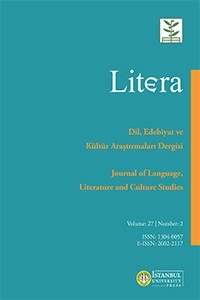Teaching and Learning Strategies for Specialised Translation in MLA: The Project in Technical Translation Class
This article describes the teaching and learning strategies that can be used at academic levels in Modern Languages Applied (MLA) study programmes, in the domain of teaching specialised translation, particularly technical translation. Among the practical techniques mentioned by specialists (Ballard, 2005, Marquant, 2005, Lavaul-Olléon, 2007) as role-plays, simulations, guided research, projects, this article focuses on the project as a teaching and learning strategy for specialised translation in MLA study programmes. This articles outlines the methodological aspects related to the project’s progress, the tasks assigned to students and the results obtained. The evaluation of students’ work enabled us to identify the type of difficulties that students have to deal with when translating technical texts (from French into Romanian), the terminological problems being considered, by far, the most prevalent issue. The issues that students have referred to as problematic were the technical terms formed by attaching affixes, as well as compound nouns, especially in the case of terms with no terminological correspondent in Romanian language. In order to validate the terminological solutions they found, the students studied similar written documents or talked to experts. The students’ feedback following this learning experience was a positive one and they expressed great satisfaction having been able to achieve the tasks assigned. We believe that the methodological aspects described have a number of advantages: the students benefit from a systematic method that enables them to follow the project’s progress, to evaluate the stage of their projects, and to take measures in order to adjust the learning process.
Keywords:
Specialised translation, technical translation, translation project, commented translation learning methods,
___
- Ballard, M. (2005). Le commentaire de traduction anglaise. Paris : Armand Colin.
- Baumgartner, P. (1993). Technical translation: putting the right terms in the right context. In C. Dolerup, A. Lindegaard (Eds.), Teaching Translation and Interpreting 2 Insights, aims, visions (pp. 295-300). Amsterdam/ Philadelphia: John Benjamins Publishing Company.
- Charte de l’Association Nationale des Langues étrangères appliquées (ANLEA). Retrieved from https://anlea.org/ lailea/charte-de-lailea/.
- Dancette, J. (1998). Parcours de traduction. Lille: Presses Universitaires de Lille.
- Delisle, J. (2003). La traduction raisonnée. Manuel d’initiation à la traductiopn professionnelle anglais-français. Méthode par objectifs d’apprentissage, 2e édition. Ottawa: Presses de l’Université d’Ottawa.
- Dictionnaire Hachette (2016). Paris : Hachette.
- Dicționarul explicativ al limbii române online (Dex online). Retrieved from https://dexonline.ro/
- Durieux, Ch. (2003). La formation à la traduction spécialisée : approche documentaire. In. G. Mareshal. et al. (dir.), La formation à la traduction professionnelle (pp: 93-108). Ottawa : Presses de l’Université d’Ottawa.
- Froeliger, N. (2003). Binaire et liminaire : la forme en traduction technique. Revue française de linguistique appliquée, 8 (2), 33-42. Retrieved from https://www.cairn.info/revue-francaise-de-linguistique-appliquee2003-2-page-33.htm.
- Ghirardini, B. (2012). Méthodologies pour le développement de cours e-learning. Un guide pour concevoir et élaborer des cours d’apprentissage numérique. Retrievedd from http://www.fao.org/docrep/015/i2516f/i2516f.pdf.
- Gouadec, D. (2009). Profession traducteur. Paris: La Maison du Dictionnaire.
- Horguelin, P. A. (1966). La traduction technique. Meta : journal des traducteurs / Meta: Translators’ Journal, 11(1), 15-25. https://doi.org/10.7202/003113ar.
- Istrate, M (2004). Tehnologii și instalații pentru reducerea emisiilor poluante. Iași: Setis.
- Izarenkov, D. I. & Oleinik, O. (1996). Selecting texts for teaching technical translation. Perspectives, 4(2), 203-213. https://doi.org/10.1080/0907676X.1996.9961287.
- Lavault-Olléon, É. (1994). Former des étudiants LEA à la traduction technique et scientifique : un défi didactique ? ASP, 3, 65-82. DOI: 10.4000/asp.4238.
- Lavault-Olléon, É. (Ed.) (2007). Traduction spécialisée : pratiques, théories, formations. Bern: Peter Lang SA.
- Marquant, H. (2005). Formation à la traduction technique. Meta : journal des traducteurs / Meta: Translators’ Journal, 50 (1), 129-136.
- Nord, Ch. (1991). Text in Analysis Translation. Theory. Methodology and Didactic Application of a Model for Translation – Oriented Text Analysis. Amsterdam/Atlanta: Ga. Rodopi.
- Pop, M.-C. (2015a). La traduction. Aspects théoriques, pratiques et didactiques. Domaine français-roumain, 2e édition. Timișoara: Orizonturi universitare. Cluj-Napoca: Casa Cărţii de Ştiinţă,
- Pop, M.-C. (2015b). Pour une approche modulaire de l’enseignement de la traduction spécialisée. In V. Cakeljić, A. Vujović, & M. Stevanović (Eds.). Actes du IIIe Colloque International Languages for specific Purposes: Past, Present, Futur / Langues sur Objectifs Spécifiques : Passé, Présent, Futur (pp. 417-422). Belgrade: Newpress.
- Pop, M.-C. (2017). Technical translation teaching and learning at initiation level: Methodological considerations. New Trends and Issues Proceedings on Humanities and Social Sciences, 4(1), 291-296. DOI:10.18844/prosoc. v4i1.2268.
- Pop, M.-C. (2019). Le projet de traduction comme exercice de simulation professionnelle en milieu universitaire. In C.-N. Teodorescu & Daniela Dincă, La traduction: Théories, pratiques, formations (pp. 201-212). Craiova: Editura Universitaria.
- Scarpa, F. (Ed.), (2010). La Traduction spécialisée : La médiation linguistique et les langues de spécialité. Ottawa: University of Ottawa Press.
- Tarasova, E. S. (2015). Technical Translation Teaching to the Engineering Students (On the Example of Patent Descriptions). Mediterranean Journal of Social Sciences, 6 (3) S1, 350-355.
- Trésor de la Langue française informatisé (TLFi). Retrieved from http://atilf.atilf.fr/.
- Vigner, G. & Martin, A. (1976). Le français technique. Paris: Hachette et Larousse.
- Başlangıç: 1954
- Yayıncı: İstanbul Üniversitesi
